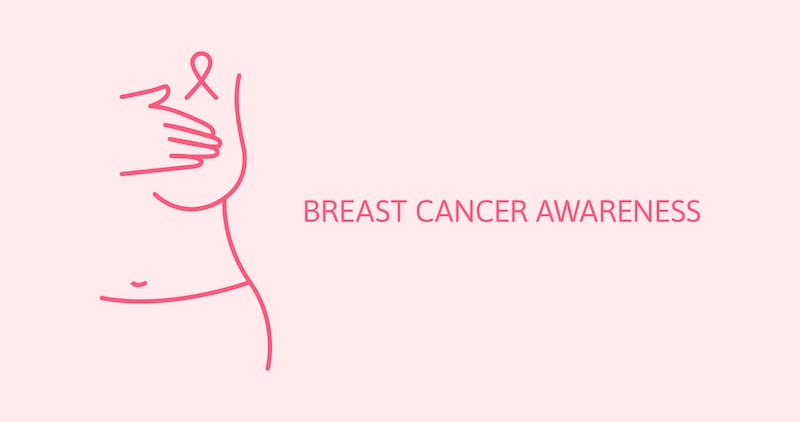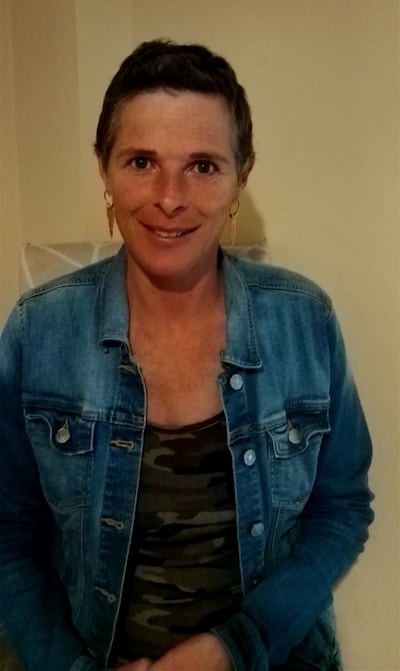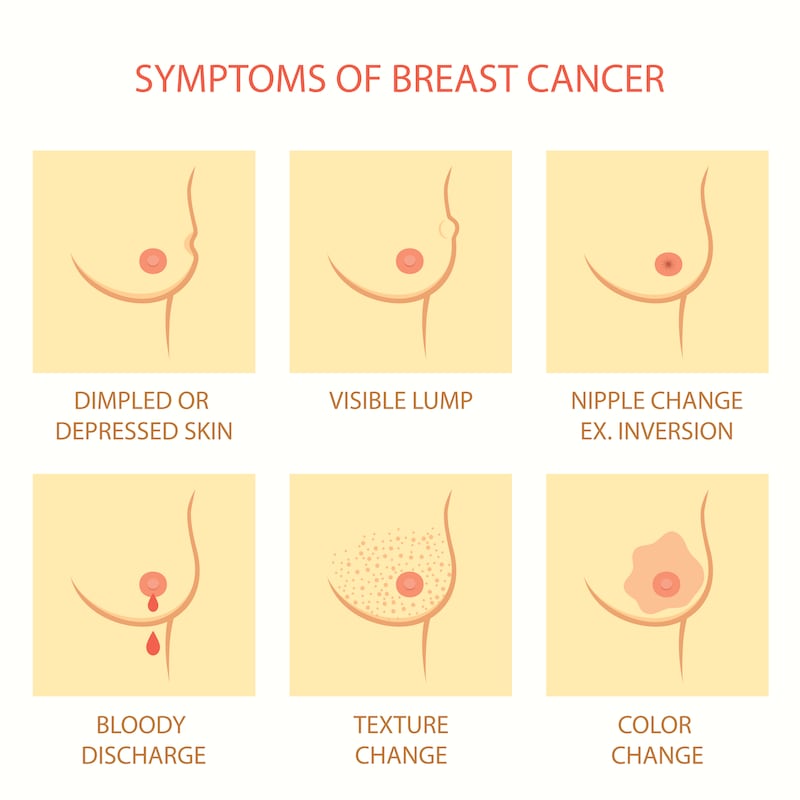“I’ll never forget the date — it was September 8th and myself and my partner were talking about male breast cancer and I decided to check my own as I had never done it before,” says Natalie Moloney.
“I wasn’t expecting to find anything, but couldn’t believe it, I found a lump on my right breast. Then, [a few days later] on that Saturday morning I rang the on-call doctor to ask for advice as my left breast had become hard and painful and, by the Sunday, the pain had become almost unbearable, so I went to my local A&E department and the only thing they could do was rule out an infection.
“So, on the Monday morning, I made an appointment with my GP who was very concerned about the lump in the breast and referred me straight away for a mammogram.”

The mother of five says that, although her doctor showed concern, “the word cancer was never mentioned”.
READ MORE
She was booked in for a whole barrage of tests at St Vincent’s hospital in Dublin. “I went up to the hospital on September 18th to the breast check clinic where I had a mammogram and ultrasound, during which the doctor said they would do a biopsy, just to be on the safe side. After that, I met with the consultant who told me initially that it was something called fibroadenoma — a unilateral, benign [non-cancerous] breast tumour that is a solid, rather than fluid-filled, lump — and that they very rarely turn cancerous.
“He told me that he would call me the next week with the results of the biopsy, but a few days later, I got a call from the BreastCheck clinic informing me that I would need to attend the hospital as some appointments had been made for me and I had to see the doctor face to face. They told me to bring someone with me. So, on the Monday, myself, my partner and my mother walked into the consultant’s office, where he sat me down and said that, although I was told previously that he didn’t think the lump was cancerous, they got a second opinion before I came in and, unfortunately, there were cancer cells present in the biopsy.”
Devasted by the news, the Wicklow woman was not only diagnosed as ER (oestrogen receptor) positive on the right breast, but a lump found on the left breast would need to be biopsied as would the calcifications which were shown to be present.

“I was completely numb and couldn’t take it in. I didn’t think I would hear the words, ‘sorry, you have breast cancer’. But, [after further tests], in November [of last year], I was diagnosed with triple-negative breast cancer in my left breast and my consultant had a plan in place for me to undergo six months of chemotherapy. I then had around six weeks of recovery before I underwent surgery, which meant I had to have a mastectomy on my left breast because they had found stage zero cancer in the cultivation set they had removed from that breast, so this showed that the cancer had already spread to other parts of it.
“Following this, I underwent 20 rounds of radiation, starting the bank holiday week in August of this year and then I was finished on September 5th. I am now on chemotherapy tablets for the next six months and I will get my blood checked every three weeks, just to make sure that my body is still able to keep going with the medication.”
One in seven women, and one in 728 men, in Ireland will be diagnosed with breast cancer in their lifetime – 43 per cent are over the age of 70 when they are diagnosed, with 34 per cent between the ages of 51 and 69, and 23 per cent being diagnosed between the ages of 20 and 50. Although only 5-10 per cent of breast cancer cases are hereditary, figures show that every year in Ireland 3,550 people will receive a breast cancer diagnosis, with more than 750 dying from the disease.
While these are stark statistics, ongoing research is helping to create positive outcomes and the five-year survival rate for breast cancer patients in Ireland is at 85 per cent, with early detection making a big difference. October is Breast Cancer Awareness Month when health officials and cancer charities get together to make people aware of the signs and seek advice if they have any concerns.

“My advice to anybody who finds a lump or notices any changes in their breast, regardless of age or gender, is to please get a check-up,” says the 43-year-old. “I genuinely thought that the lump I found was nothing to worry about and, even when there was also a lump on my left breast and they were the mirror image of each other, I still never thought it was cancer.
“As a mother, especially when your kids are young, I think the first thing you think about when you hear the word cancer is, ‘Oh my God, my kids will need me to be around’ and ‘I want to watch them grow up’. So, because of the kids, I made sure to do everything that I was advised to do — and I would say to anyone else who ever finds themselves in a position where they are being diagnosed with breast cancer, to accept any help offered. There are lots of agencies out there offering so much support, so reach out to all of them — nobody has to face a diagnosis of breast cancer on their own.
“So, while for the past year, I have been battling bilateral breast cancer, I am so grateful to the doctors, the staff and the nurses who all looked after me. Also to the Marie Keating Foundation, Purple House and the Irish Cancer Society, because, without their support, I wouldn’t be in the sound frame of mind that I am today. I have undergone so much in the last year that it is all a blur with hospital appointments, followed by treatment, then recovery, with surgery after that, then after I recovered from that, I started and finished radiation and then had another recovery period. I have been constantly kept busy, so I didn’t have time to think of what my body has been through.
“Of course, if you sit down and think about it all, it can be very overwhelming, but everyone who is going through cancer has to have a goal — mine was to survive.”
Symptoms of breast cancer include:

- A change in size or shape of your breast, such as one breast becoming larger than the other;
- A change in the direction or shape of your nipple, especially if it sinks into your breast or becomes irregular in shape;
- A change in the skin on or around the nipple such as a rash or flaky or crusted skin;
- An unusual discharge (liquid) from one or both of your nipples;
- Swelling in your breast or armpit or around your collarbone;
- A lump or thickening in your breast;
- A change in the skin such as puckering, ridges or dimpling (like orange peel) or redness;
- Constant pain in one part of your breast or armpit;
- Soreness or warmth (inflammatory breast cancer);
- A red scaly rash on one nipple, which may itch or burn (Paget’s disease of the breast);
- Breast pain alone is rarely a symptom of breast cancer.





















